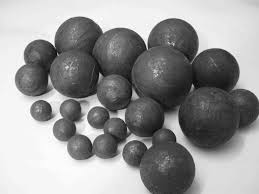 How do you know if a larger SAG ball will increase your tonnage and how to select it? When is it time to change to a larger Ball in your SAG Mill?
How do you know if a larger SAG ball will increase your tonnage and how to select it? When is it time to change to a larger Ball in your SAG Mill?
It’s difficult to generalize on SAG mill ball size selection as it depends on a number of factors:
- Ore properties
- Level of impact breakage in the mill (speed, lifter design, ball load)
- Grate size opening
- Circuit priorities — higher tonnage or finer grind?
Compared to 4” media, a larger 5” ball will:
- Coarsen the mill discharge size
- Increase potential for liner damage/higher wear rate
- Provide a lower number of impact breakage events due to the lower number of balls
- Provide higher energy impact breakage events
In a way, the media size should be selected based on feed size and grate opening. Finer feed (i.e. secondary crushed) justifies a 4” ball but if the grate opening is 60 mm x 100 mm slots then a 4” ball won’t last very long.
If the feed top-size is >100 mm, then typically a 5” ball is suitable. To date, I have not seen any clear evidence of improved throughput from a 5.5” or 6” ball size alone (combined with lifter profile changes, yes).
Ball load is also a factor, as you can operate with a higher ball load of smaller media without risking high ball wear and/or liner damage.
So going to a larger 5” ball is a good idea for primary crushed feed with a relatively large grate opening if there’s evidence the 4” ball is not enough to break the coarse particles. Another option is a blend of 4” and 5” media — if this is possible.
What trommel recycle do you have?
SAG mills can operate with balls bigger than 4″, yes. But what job do you need these balls to do? Typically bigger balls give you more
crushing action and less attrition/abrasion action. Bigger balls are more efficient against rock has high impact/rod work index and lower ball work index values. Or, if you are Chilean, then you install huge mills that need huge 6″ balls because, well, everything is huge.
When you crash-stop the mill, do you see a lot of pebbles in it? If there are few pebbles (eg. Goldex), then bigger balls will give worse
grinding action, and you might even want to suggest charging smaller balls, not larger. If the mill is choked with a lot of pebbles, then
yes, larger balls will help to break those pebbles.
